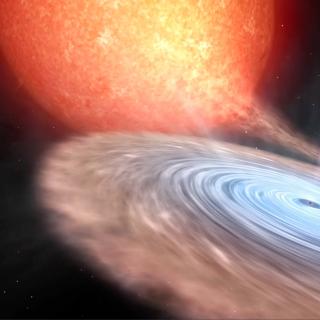Bibcode
Hardy, L. K.; Dhillon, V. S.; Spitler, L. G.; Littlefair, S. P.; Ashley, R. P.; De Cia, A.; Green, M. J.; Jaroenjittichai, P.; Keane, E. F.; Kerry, P.; Kramer, M.; Malesani, D.; Marsh, T. R.; Parsons, S. G.; Possenti, A.; Rattanasoon, S.; Sahman, D. I.
Bibliographical reference
Monthly Notices of the Royal Astronomical Society, Volume 472, Issue 3, p.2800-2807
Advertised on:
12
2017
Citations
97
Refereed citations
81
Description
We present a search for optical bursts from the repeating fast radio
burst FRB 121102 using simultaneous observations with the high-speed
optical camera ULTRASPEC on the 2.4-m Thai National Telescope and radio
observations with the 100-m Effelsberg Radio Telescope. A total of 13
radio bursts were detected, but we found no evidence for corresponding
optical bursts in our 70.7-ms frames. The 5σ upper limit to the
optical flux density during our observations is 0.33 mJy at 767 nm. This
gives an upper limit for the optical burst fluence of 0.046 Jy ms, which
constrains the broad-band spectral index of the burst emission to
α ≤ -0.2. Two of the radio pulses are separated by just 34 ms,
which may represent an upper limit on a possible underlying periodicity
(a rotation period typical of pulsars), or these pulses may have come
from a single emission window that is a small fraction of a possible
period.
Related projects

Black holes, neutron stars, white dwarfs and their local environment
Accreting black-holes and neutron stars in X-ray binaries provide an ideal laboratory for exploring the physics of compact objects, yielding not only confirmation of the existence of stellar mass black holes via dynamical mass measurements, but also the best opportunity for probing high-gravity environments and the physics of accretion; the most
Montserrat
Armas Padilla